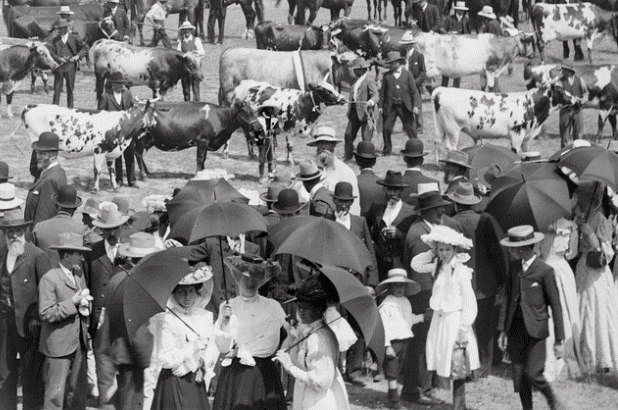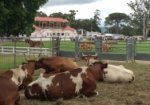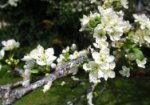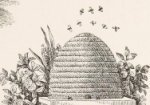Agricultural shows have always been centers for display as much as community get-togethers. For the inhabitants of Meroogal the annual Nowra show – which opens next week – was an anticipated event, and not just because they were its immediate neighbors.
In the early 1800s a range of agricultural and other societies were formed to promote the various branches of industry and encourage experimentation and innovation. The then-named Agricultural Society of NSW – to which the epithet ‘Royal’ was later added – was founded in 1822. The Macarthurs of Elizabeth Farm and Camden won a succession of prizes from a range of local and international societies for their wool, wheat and garden flowers, and the Wentworths of Vaucluse had their prize peaches. In the Shoalhaven, south of Sydney, the women of Meroogal entered cakes, jams and preserves in the local Nowra show – until 1937 run by the ‘Shoalhaven Pastoral Agricultural and Horticultural Association’ and rather conveniently located at the showground just over the road from their house.
Opening next week for 2016, the Nowra show was established in 1874, and was first held at the nearby Terarra estate. Following the terrible floods of 1870 a campaign began to relocate the show to the township, on land set aside for such use. Secured in 1884, the first show on the new grounds opened the following year. It was a time of great change for Nowra, and the Shoalhaven as a whole, and the shows provided a celebratory focus for the region’s growing industry and population.
Showtime!
Certificate of Merit from the Royal Agricultural Society of New South Wales awarded to Kenneth McKenzie, 1904. Meroogal collection, Sydney Living Museums
The reports for the 1888 Nowra show give a good indication of the scope of entries in the opening decade at the new grounds, from the agricultural to domestic:
The Nowra show opened on February 22. The entries numbered 2500; being about double the number of last year. Blood and draught horses were not very numerous, but hackneys, hunters, miscellaneous horses, and ponies wore very plentiful. In the various classes there wore some very creditable animals. Cattle, consisting of Ayrshires, Jerseys, and dairy cattle, made a good show. There was no prize for shorthorns. Poultry were exceedingly well represented, and pigs and dogs fairly. In farm produce, fruits, and vegetables, the exhibits were very superior. Potatoes and maize were especially good.
In jam and preserves there were 450 exhibits, representing numerous classes of fruits. This industry is largely on the increase in the district, reflecting credit on the housewives. Flowers were largely represented; and the specimens were good. Ladies’ needlework and fancy work were excellent; and works of art and drawings were plentiful and creditable Farming implements and vehicles were not as numerous as desirable. Still some remarkably good district workmanship was shown. There was a fair display of dairy utensils, consisting of separators, churns, butter-workers, &c. The show appropriately represented the resources and development of the large and fertile Shoalhaven district. [1]
The specific mention of dairying equipment reflects the region’s developing industry, then moving from an individual to a co-operative structure [2]. In the same year Tottie (Kennina McKenzie Thorburn, 1865-1956) entered “a collection of cakes” [3], for which she received the 3rd prize. While she doesn’t say what they were, it’s probable these were a seed, fruit, and a sponge cake as all feature in her diaries at this time. In following years she writes in her diary of preserved damsons, that she entered in 1890 and 1892.
The scene was much the same as that recorded in these views, taken a decade later, that highlight how important the Shows were, and still are, to their local communities. Black parasols seem de rigeur for the women of Nowra:
Cattle judging at the Nowra show, ca1910. From ‘Shoalhaven scenes and people; Cyrus S Moss photographer. State Library of NSW ON436
Scene at the Nowra show, 1907. From the collections of the Wollongong City Libraries and the Illawarra Historical Society
Edwardian fashion at the Nowra Show, 1907. From the collections of the Wollongong City Libraries and the Illawarra Historical Society
Opened in 1905, the rather wonderful Federation-style pavilion seen in these views is still the centerpiece of the Nowra showground:
The pavilion at Nowra showground nearing completion in 1905 from ‘Shoalhaven scenes and people’, photographer Cyrus S Moss, 1905. State Library of NSW ON436
The packed pavilion at the Nowra showground, photographer Cyrus S Moss, ca1905-10. ‘Shoalhaven scenes and people’, State Library of NSW, ON436
Tottie wasn’t the only family member to have success at the Shows. In 1904 her uncle Kenneth McKenzie was awarded the Certificate of Merit you can see above for a piece of his finely crafted cabinet work. You can still see several examples of his work, including this work-box, at Meroogal today, and read more about him here.
Timber work box inlaid with Australian timbers, made by Kenneth McKenzie ca1900. Meroogal collection, Sydney Living Museums. Photograph (c) Rob Little RLDI
The certificate’s central panel is surrounded by wonderful vignettes of rural life and produce, including a range of prize animals. A none-too-subtle indication of the changing nature rural life is given in this vignette, with its horse-drawn plough in action, and a steam engine appearing to the right behind the golden peaches and pineapple:
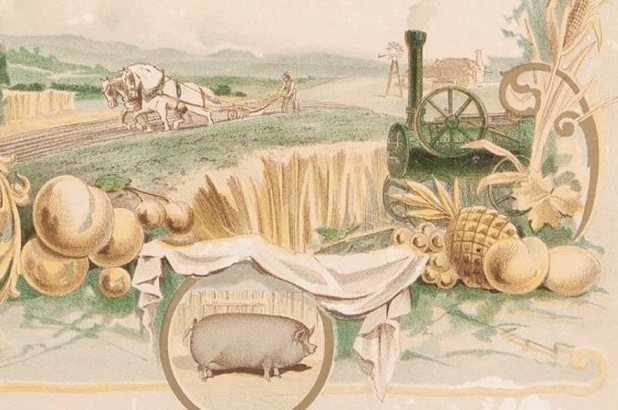
Detail of certificate of Merit from the Royal Agricultural Society of New South Wales awarded to Kenneth McKenzie, 1904. Meroogal collection, Sydney Living Museums
Roll up! Roll up to Meroogal!
This year the Nowra show is on Friday 5th and Saturday the 6th of February. Just across the road – at the corner of Corner West and Worrigee streets – Meroogal will be open on both days from 10 till 4 with tastings of traditional lemonade and Tottie’s lemon biscuits, from the original recipe in the Meroogal manuscript collection. Both the biscuit and lemonade recipes are also in our new book, ‘Eat Your History: stories and recipes from Australian kitchens’ – found on all the best bookshelves 🙂 Tours of the house on both days are on the hour, with the first tour at 10 and the last tour at 3pm. See here for details including admission costs.
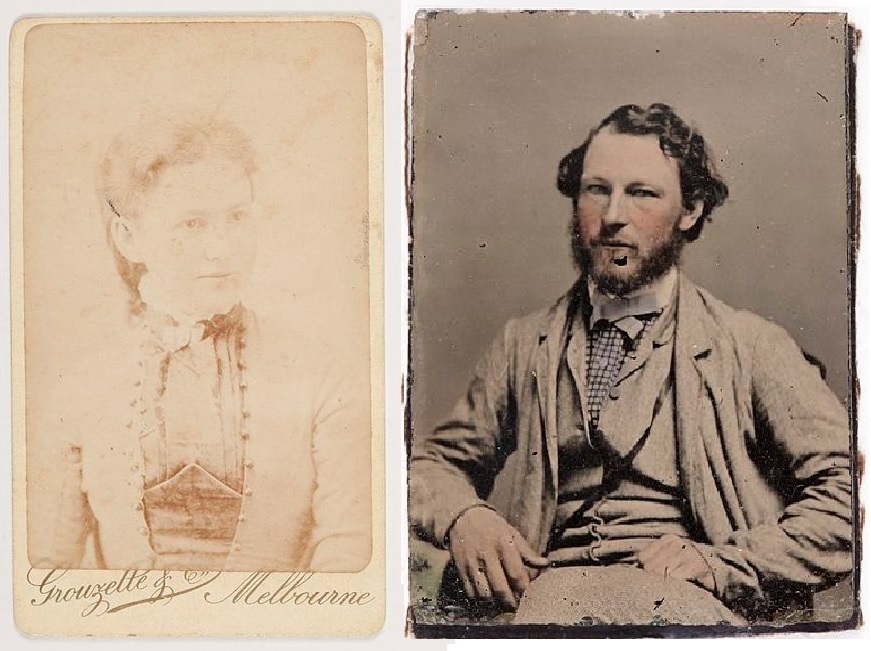
[L] Tottie Thorburn, 1886., and [R] Kenneth McKenzie, ca1860. June Wallace Papers, Caroline Simpson Library & Research Collection; and [R] Meroogal collection Sydney Living Museums
Notes
[1] Australian Town and Country Journal, Saturday 25th February, 1888
[2] See Meroogal Nowra, a history and a guide. Glebe, Historic Houses trust of NSW, 1988
[3] Tottie’s diary entry for Thursday 23, 1888.
